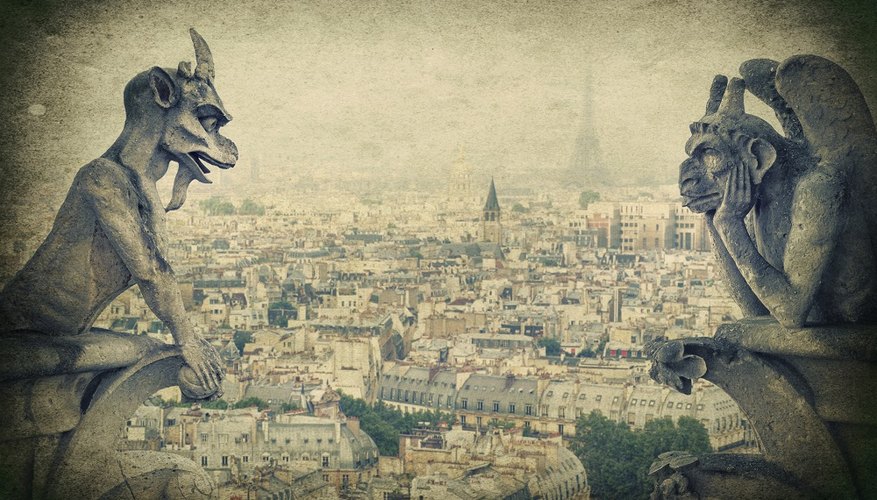Gothic fiction originally arose in England in the late 18th and early 19th century. It soon spread to other parts of the world, especially the United States, where it influenced the writing of such authors as Nathaniel Hawthorne and Edgar Allan Poe. It falls in the realm of Romantic literature, although it often explores darker and more tragic themes than other Romantic works of the period. It is distinguished by a number of very specific qualities.
- Gothic fiction originally arose in England in the late 18th and early 19th century.
- It falls in the realm of Romantic literature, although it often explores darker and more tragic themes than other Romantic works of the period.
Setting
Gothic literature often is set in old, rundown structures: especially castles or great country manors. The building usually features hidden passages, trap doors, dungeons or secret rooms, and has suffered a decline from its former greatness.
Environment
The environment around the setting reflects a bleak or foreboding atmosphere: dark forests, imposing mountains, stormy weather or areas far away from civilisation.
Atmosphere
Gothic literature stresses an atmosphere of mystery, horror and dread. The plot involves hidden secrets which threaten the protagonist.
Protagonists
The protagonists of Gothic literature are isolated or alone. That isolation could be physical (trapped in a house far from civilisation) or emotional (cut off from the people around her), and may either be self-imposed or a result of circumstances beyond her control.
Emotions
Emotions run high in Gothic literature. Characters are often passionate and strong-willed, defying others or even their own common sense in pursuit of their goals. Women are often curious and have a tendency to swoon, while men storm and rage in reflection of unseen inner torments.
- Gothic literature stresses an atmosphere of mystery, horror and dread.
- Women are often curious and have a tendency to swoon, while men storm and rage in reflection of unseen inner torments.
Damsels in Distress
The "damsel in distress" motif appears quite often in Gothic literature, with women threatened by tyrannical men or just the circumstances in which they find themselves. They often appear frightened and may suffer from some kind of ailment.
- The "damsel in distress" motif appears quite often in Gothic literature, with women threatened by tyrannical men or just the circumstances in which they find themselves.
Foreboding
Ominous implications precede dark events in Gothic literature. Unlucky omens appear, ancient curses linger in the air, and dark forces beyond the hero's ken thwart his ambitions.
The Supernatural
The supernatural often appears in Gothic literature, particularly ghosts and unexplained manifestations. In some Gothic novels, these elements ultimately have a rational explanation, but the implication always suggest something not of this world.
Decay
The overall impression of a Gothic world is one of decay: a formerly great family, community, country or individual who has peaked and now begins a slow process of decline. This appears both in the landscape (crumbling buildings) and in the characters themselves.
Drama
The events in Gothic literature emphasise high emotion and often reflect a heightened sense of drama. Examples include murders, kidnappings, people going mad and tragic illnesses.
